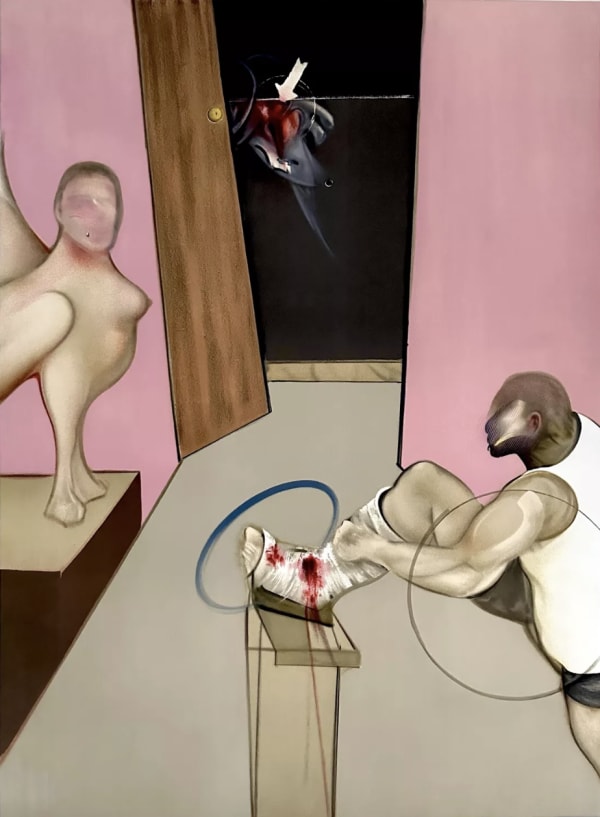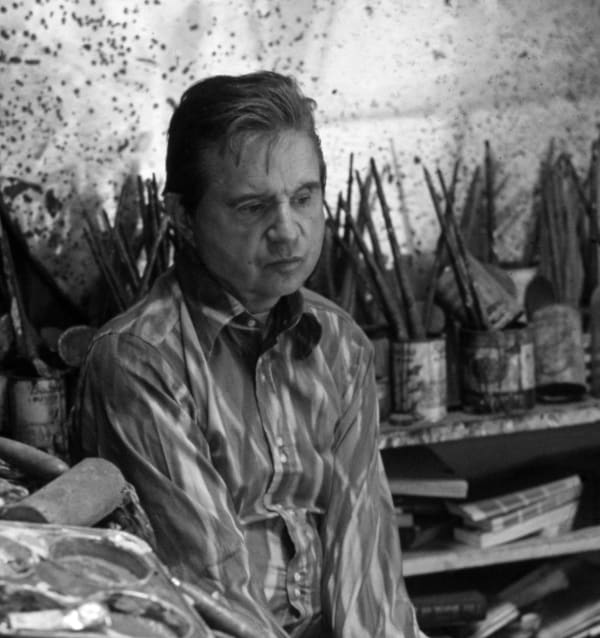-

Triptych Inspired by the Oresteia of Aeschylus (left panel), 1981
Oil on canvas, each panel 198 x 147.5cm
©The Estate of Francis Bacon, Image reproduced for informational purposes only.
-
If I didn’t have to live, I’d never let any of it out.
- Francis Bacon
The Oresteia by Aeschylus is a trilogy of Greek tragedies that traces the cycle of revenge, guilt and justice within the cursed House of Atreus. It begins with Agamemnon, where the king is murdered by his wife, Clytemnestra, for sacrificing their daughter, Iphigenia. In The Libation Bearers, their son, Orestes, kills his mother to avenge his father, only to be pursued by the Furies for the crime of matricide. The final play, The Eumenides, sees Orestes tried in Athens, where the goddess Athena replaces endless vengeance with lawful justice. The trilogy moves from chaos to order, exploring fate, morality and the cost of human suffering, themes that would later resonate deeply in Francis Bacon’s art.



